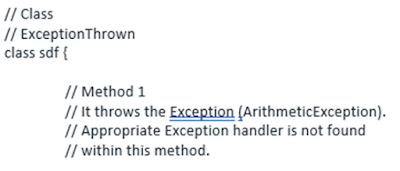SPRING
- WHAT IS SPRING
- ADVANTAGES
- APPLICATIONS
A basic overview of the Spring framework is shown with examples. Rod Johnson invented it in 2003.
The Spring framework makes it easy to construct JavaEE applications.
Spring Framework
A free-floating spring is the shape. It appears to be a framework of frameworks since it
supports several other frameworks, such as Struts, Hibernate, Tapestry, EJB, JSF, and more.
Another way
to look at it as a framework that we may use to tackle various technological problems.
Numerous modules for IOC, AOP, DAO, Context, ORM, WEB MVC, and many more topics are included
in the Spring framework. We shall learn about these courses on the next page. Let's first
review dependency injection and IOC.
Why to use spring?
The Spring framework is an example of an open-source Java platform. In June 2003, Rod Johnson
first publicly released it under the Apache 2.0 license. Spring is a featherweight in terms of viscosity
and volume. The typical Spring Framework installation takes up around 2 MB of space. The Java EE
platform may be used to construct web apps with the Spring Framework, but any Java program can
be created by leveraging its basic features. The POJO-based programming paradigm provided by the
Spring framework encourages excellent programming practices and facilitates J2EE development.
Inversion of control (IOC) and dependency injection
By removing dependencies, these design principles aim to simplify programming. They facilitate code
maintenance and testing. We shall understand this with the aid of the following code.
Here, the place and the employee are closely related to one another. In a scenario involving reverse
control, we arrive at this.
As a result, the IOC only applies the code rigorously. We won't have to deal with the code
when we apply our logic in a new setting.
It is the IOC container's responsibility to install the dependency in the Spring framework.
We contribute metadata to the IOC repository in two formats: annotations and XML files.
Dependency injection benefits include:
makes code easily testable
loosely linked for easier maintenance.
Advantages of spring framework
Spring Framework has many advantages. They are as follows:
1) Predefined templates
Spring provides templates for several technologies, including JDBC, Hibernate, JPA, and
others. Having said that, a ton of code is unnecessary. hiding these technologies
underlying mechanisms.
Take the Jdbc Template for example. There is no need to write code to handle exceptions,
create a connection, create an expression, bind an event, close a connection, etc. To
execute the query, all we have to do is write code. Therefore, it saves a ton of JDBC
code.
2) Loose coupling
Dependency injection makes Spring apps loosely connected.
3) Easy to test
Dependency injection makes testing applications easier. Spring apps don't need servers
to run, in contrast to Struts and Enterprise JavaBeans (EJB) applications.
4) Lightweight
The lightweight framework's low weight is a result of the POJO implementation. The
Spring Framework does not require the implementation of interfaces or class
inheritance. That explains why its name is non-intrusive.
5) Fast development
Spring
The framework's dependency injection and multi-framework support make it easy to
develop JavaEE applications.
6) Powerful abstraction
Strong abstraction is offered for JavaEE standards, including JMS, JDBC, JPA, and JTA.
7) Declarative support
For caching, validation, events, and formatting, it offers declarative support.
Applications of spring
POJO-based
With POJO applications and Spring, developers may create enterprise-level
applications. You may forego using an EJB container as an application server if
you solely use POJOs. An alternative is to use a reliable server container like
Tomcat or any other commercial program.
Modular
Spring is installed modularly. Even with many packages and classes, you only need to
care about what you need and ignore the others.
Integrate with existing frameworks
Rather than building from the ground up, Spring makes extensive use of existing
technologies. These include several JEE, Quartz, JDK timers, logging
frameworks, object relationship management (ORM) frameworks, and other
visualization tools.
Testability
Because environment-dependent code is placed in this framework, testing the application written in
Spring is negligible. Additionally, using JavaBean-style POJOs makes it easy to use dependency
injection to inject test data.
Web MVC
The well-designed Spring Web Framework is a good choice as an alternative to too-complex web frameworks like Struts. This MVC framework is based on the web.
alternative web frameworks.
Central Exception Handling
With Spring's simple API, exceptions thrown by technologies such as JDBC, Hibernate,
or JDO may be simply converted into consistent unchecked exceptions.
Lightweight
One common feature of IoC containers is their lightweight nature, especially when
compared to EJB containers. This makes it simple to design and distribute
programs with low memory and CPU requirements.













